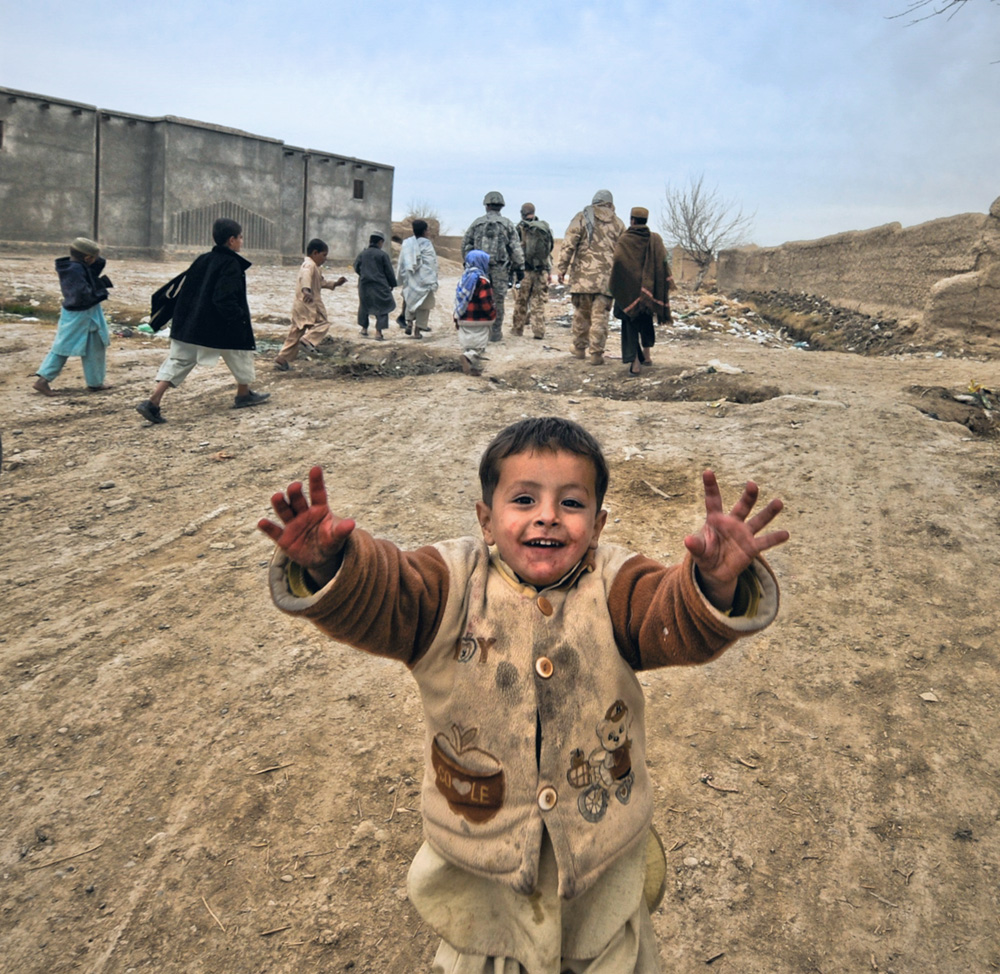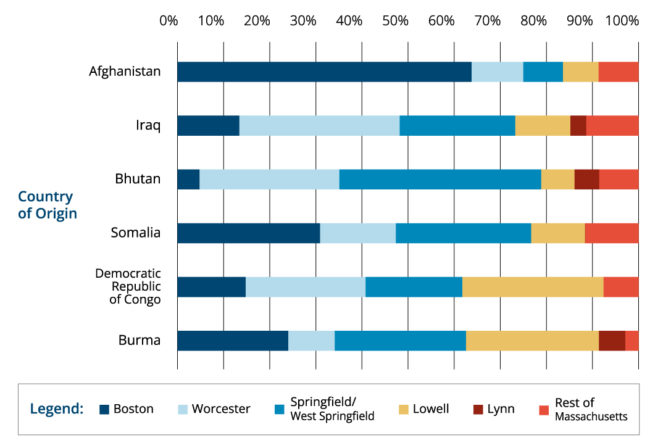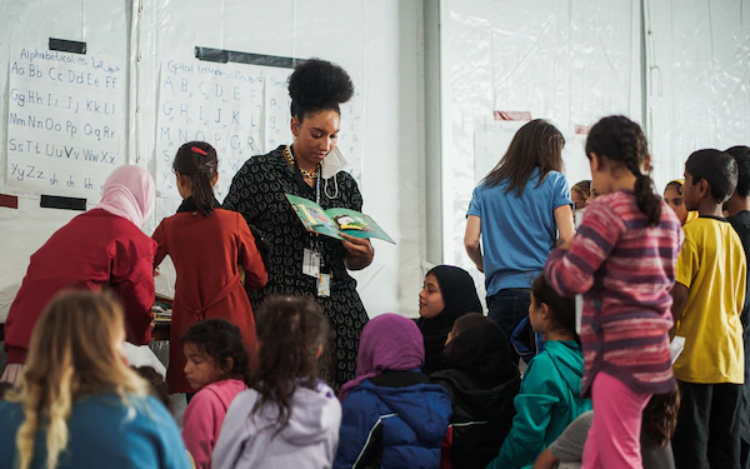
August 31, 2021, marked the last day of the U.S. occupation of Afghanistan. The world witnessed footage from Kabul’s airport of Afghans desperate to leave the war-ravaged country now under control of the Taliban. As the occupation ended, more than 122,000 people were evacuated from Afghanistan, including more than 5,400 U.S. citizens and permanent residents.
Two days prior, on August 29, 2021, the U.S. State Department had launched Operation Allies Welcome to help vulnerable Afghans resettle in the United States. The most likely method of entry will be “parole” after being vetted overseas. Parole is a temporary status granted for up to two years. Although parolees may have work authorization, they do not have immigration status or access to public benefits. Once paroled, Afghan nationals may be eligible to apply for immigration status, primarily a Special Immigrant Visa (SIV) or asylum, both of which are severely backlogged and can take years to complete.
The SIV program was launched in 2008 to grant visas to Afghan and Iraqi nationals who worked for or on behalf of the U.S. government. Many SIV holders were interpreters and translators for the U.S. military, assisting American troops in carrying out delicate military operations. Many evacuees coming in the next year are expected to be given SIVs due to their work alongside the U.S. military.
The Biden administration plans to resettle 95,000 Afghans. This would nearly double the nearly 100,000 Afghans who moved to the United States from 1990 to 2020. Starting in 2010, SIV holders made up 67,995 of these individuals.
The State Department has identified an initial group of 37,000 evacuees to be resettled in the United States. As of September 2021, about 24,000 have already arrived, 23,000 are on U.S. military bases and 20,000 are waiting in other countries. States that have already resettled the largest number of Afghans over the last 20 years, such as California, which alone hosts one-third of Afghans resettled since 2001, Maryland, Texas and Virginia, will continue to receive the majority of these new evacuees. Massachusetts is expected to welcome and resettle 900 of this first group of Afghan evacuees.
The Immigrant Learning Center’s Public Education Institute sourced the data below from the Refugee Processing Center and cross-referenced them with state-wide data collected by the Massachusetts Office of Refugees and Immigrants. The data shows that between fiscal years 2010 and 2016, 13,086 people from 59 countries were resettled in 132 cities and towns across Massachusetts, primarily from, in order of number of refugees from greatest to least, Iraq, Bhutan, Somalia, Democratic Republic of Congo and Burma. Only a fraction of this total was comprised of refugees from Afghanistan. The top destination cities were Boston, Worcester, Springfield, Lowell and Lynn. Historically, displaced people have been resettled in places with the highest concentrations of their countrymates. It is likely that the Operation Allies Welcome evacuees will be resettled primarily in these aforementioned top cities.
Massachusetts Cities with Highest Rates of Resettlement, Fiscal Years 2010 – 2016
Number of Refugees by Country of Origin in Top Massachusetts Cities for Resettlement
Scroll sideways on the table below to view more content.
| Country of Origin | All Massachusetts |
Boston | Worcester | Springfield/ West Springfield |
Lowell | Lynn |
|---|---|---|---|---|---|---|
| Afghanistan | 116 | 74 | 13 | 10 | 9 | – |
| Iraq | 3,791 | 509 | 1,319 | 950 | 452 | 131 |
| Bhutan | 2,629 | 126 | 797 | 1,151 | 190 | 141 |
| Somalia | 1,893 | 585 | 311 | 556 | 221 | 1 |
| Democratic Republic of Congo |
1,073 | 159 | 279 | 225 | 329 | – |
| Burma | 1,085 | 261 | 109 | 309 | 313 | 62 |
Distribution of Refugees by Country of Origin in Top Massachusetts Cities for Resettlement

There are 13 refugee resettlement offices and affiliates in Massachusetts anticipating the arrival of Afghan evacuees. Not surprisingly, they are clustered in areas with the highest concentration of refugees.
Map of refugee resettlement offices and affiliates in Massachusetts anticipating the arrival of Afghan evacuees
| 1. Ascentria Care Alliance, Westfield — Immigration Legal Assistance Program | 8. Ascentria Care Alliance, Waltham — Unaccompanied Refugee Minors Program |
| 2. Ascentria Refugee and Immigrant Services, West Springfield | 9. Refugee and Immigrant Assistance Center, Boston |
| 3. Catholic Charities — Welcome Home Refugee Resettlement Program | 10. Catholic Charities – Refugee and Immigration Services |
| 4. Jewish Family Service of Western MA | 11. International Institute of New England, Boston |
| 5. Refugee and Immigrant Assistance Center, Worcester | 12. Refugee and Immigrant Assistance Center, Lynn |
| 6. Ascentria Care Alliance, Worcester — Unaccompanied Refugee Minors Program | 13. International Institute of New England, Lowell |
| 7. Jewish Family Service of Metrowest |

Although the Fiscal Year 2022 Continuing Resolution that was passed in September 2021 does include funding to provide arriving Afghans with resettlement services and supplemental funding to resettlement agencies, it expires on December 3, 2021, and is thus a temporary patch. The resettlement community is hoping that more robust spending will be included in the final budget to provide Afghan evacuees access to permanent protection, services and benefits. For now, the majority of evacuees will be arriving in Massachusetts with “parolee” status and depend on local not-for-profit and faith-based resettlement agencies and community organizations to help them transition to their new American lives.
The sustainability of this model depends on private support to facilitate job searches, job placement, school placement, English instruction, basic financial and civic education, and arrangement of medical and social services. This initial investment in helping Afghan evacuees become new Americans will likely pay off well for both the evacuees and the community at large. Looking at the example of refugees, several research findings indicate that on average, refugees pay taxes that far exceed the relocation costs and social benefits they receive. The U.S. Department of Health and Human Services found in 2017 that refugees are a net benefit to government revenues, bringing in $63 billion more in revenue to federal, state and local governments than they received in benefits from 2005 to 2014. The ILC’s calculations corroborate this finding as well. Refugees, who make up less than one percent of the population of Massachusetts, contributed nearly three percent of total state taxes paid in 2015.
Massachusetts expects to resettle 900 Afghans over the course of the next year. The economic and social contributions they will eventually make will not only outweigh the initial cost of resettlement but enrich the cultural landscape and strengthen local communities.
